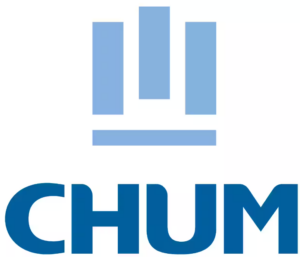What is OHS in a company?
Occupational health and safety refer to a multidisciplinary approach that aims to eliminate or limit certain harmful occupational effects/hazards on human beings (physical or mental health-related to occupational health).
OHS’s role is to :
- ensure the physical, mental, and social well-being of employees
- prevent the risks to which employees are exposed in the workplace
- manage the care of workers within the framework of the OHS
- maintain workers in a job adapted to their physiological and psychological capacities.
Who manages the OHS in the company?
The OHS is under the responsibility of the workers’ company manager and the trade-union representatives. Depending on the size of the company, there may also be an Occupational Health and Safety Committee composed of the employer and the worker’s representatives and must be supported by management.
What are the laws/regulations related to OHS?
Here is the list of the main laws, regulations, and codes related to Occupational Health and Safety in Canada, that the employer must comply with:
- Canada Labour Code
- Occupational Health and Safety Regulations (OHSR)
- Act respecting labour standards (LSA), which dictates the working conditions in Quebec, came into force on April 16, 1980
- Act respecting occupational health and safety (AOHS): is a preventive law whose main objective is the elimination of risks and hazards at the source to protect the health, safety and physical integrity of workers (s. 2, AOHS)
- Pay Equity Act
- Act respecting industrial accidents and occupational diseases (AIAOD)
Also worth knowing: the Accident, Incident and First Aid Register
You can find all the applicable laws on the CNESST website.
What are the benefits of investing in OHS?
OHS can be experienced as restrictive and time-consuming for the employer (even a hindrance). That said, it brings real measurable benefits:
- Reduced absenteeism
- Improved ability to cope with stress and change
- Increased productivity and job satisfaction
- Increased retention rate and recruitment
- Improved corporate image and culture
This strategy aims to have a positive impact on the company’s performance and on the well-being of employees. These actions promote the company’s image and attractivity.
How do you ensure occupational health and safety?
Prevention is essential to reduce risks in the workplace. The employer can set up a risk management plan with the following objectives:
- to identify the main sources of risks and hazards within your company;
- to write and share with the personnel, the procedures and the standards applied in the company
- to identify and follow the state of the protective equipment to be used and available to all employees;
- to verify the application of the monitoring and maintenance measures including the safety of the equipment;
- to identify and plan the necessary training.
Discover all the features of the BlueKanGo OHS solution:
What are the main KPIs/indicators to track OHS strategy?
Do you need to follow and share the result of your OHS strategy? Here are some essentials KPI :
- Absenteeism rate.
- Occupational accidents (frequency and severity rates).
- Occupational illnesses.
- Frequency rate (FI): rate of accidents and deaths occurring related to the workforce and the number of working hours.
- Total frequency: total number of undesired events (including fatalities, personnel rendered unfit as a result of an accident or whose activity is restricted) divided by the total number of working hours of all workers.
- Severity Indicator (SI): refers to frequency and severity, i.e. the number of compensated days during a given period of time, divided by the number of working hours.
- Frequency index (FI): number of accidents followed by sick leave.
- Cost indicators.
- Number of people trained/number of training hours.
- % of payroll spent on training.
- Existence and content of risk assessment model.
- Presentation of the human resources and training policy…
To these indicators, you can add specific indicators related to your activity and your company. In order to monitor and calculate them automatically, you can rely on digital technology, specifically when it comes to using analytical technologies such as Microsoft Power BI.
How to save time while ensuring the safety of your workers?
To organize an efficient and least time-consuming OHS process, use software specialized in occupational health and safety management.
You will be able to centralize all data and plan actions. Your data will be pooled, and even data collecting will be automated, which will be less time consuming and limit the risk of error. A digital tool will collect and anaylse the data automatically and represent it via a dynamic dashboard and provide you with real-time KPIs.
This will allow you to efficiently monitor the risk management plan and satisfy the board of directors.
Finally, you can adjust your approach according to the requirements of the regulations in your sector of activity and your province.
Which features are essential for OHS management software?
If you want to choose a software to manage your OHS, here are our recommendations on the essential functionalities:
Electronic Document Management (EDM): to centralize documentation (validation circuit, management of histories and modifications, document life cycle management…)
Audits, surveys or safety visits: to create your reports, grids and forms directly in a digital tool accessible via tablet or smartphone.
Non-conformities and incident report: to input information directly on a tablet/smartphone. The information is sent directly to the Quality and OHS departments and/or to management.
HR and OHS management: a professional software that can be upgraded to go beyond OHS management and integrate elements from HR management (either via HR applications available in the software or via API to your HRIS solution)
Occupational accidents and diseases: to prepare the declaration elements and follow up on occupational accidents and diseases
Management review: to successfully complete your process and departmental reviews: mapping, steering tables, internal audits, etc.
Want to know more? Discover our selection: Best apps for OHS management
Beyond the features, the best software is the one whose editor integrates a personalized service to customize the tool according to your needs. Secure hosting and data processing as well as support and assistance are essential in the sustainable implementation of a digital solution. At BlueKanGo Canada, we strive for a quality, long-term relationship. These elements are naturally integrated into our software.
Expert Conclusion:
Implementing an OHS approach is essential but complex, time-consuming and highly impactful. Neglecting this strategy can have serious consequences (human and financial costs). To protect workers and be in compliance with regulations, take the 4.0 turn and use a dedicated digital tool that will natively integrate these elements. The benefits of OHS management are numerous, both externally through the company’s brand image and internally to improve the working conditions of employees.
Its success depends on a clear and well monitored approach. Digital technology is essential to save time and increase efficiency.











